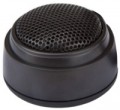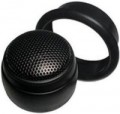Rated power
Rated power of the acoustic system. Most often, the average (root mean square) sound power is indicated as rated.
The most obvious point related to this characteristic is the volume of sound: the more powerful the sound system, the louder the sound it can produce, all other things being equal. In addition, compatibility with an external amplifier depends on this indicator: its power should not exceed the power of the sound system, otherwise overloads and damage to the speakers are possible.
Max. power
The maximum power of a short-term (up to several seconds) incoming signal that the speaker can withstand without physical damage. Just like the nominal power, it matters for the selection of acoustics for an amplifier (or vice versa): it is believed that the maximum power of the speakers should be at least 2 times higher than the maximum power of the signal source.
Sensitivity
This parameter determines the volume of the sound of a particular speaker when a certain standard signal is fed to it. Typically, this is considered a 1 W signal with a frequency of 1000 Hz. The higher the sensitivity, the less the speaker is demanding on the power of the amplifier. So, it is believed that for acoustics connected directly to the car radio, the sensitivity should be 80 dB or more; for less sensitive systems it is recommended to use a separate amplifier.
Tweeter size
Size of the high-frequency speaker(s) included in the speaker design.
Size affects the amount of space required to install the speaker. However, high frequencies do not require large diffusers, so this dimensions is usually small and does not significantly affect the overall dimensions of the speaker system. The only exception is individual high-frequency tweeters (see "Type"), where the overall dimensions of the housing are directly related to the dimensions of the diffuser.

